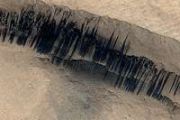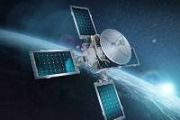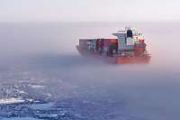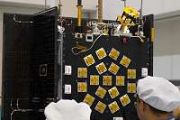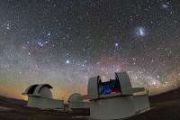
Copernical Team
South Korea's spy satellite to start 'full-fledged' mission
 South Korea's first home-grown military spy satellite is ready to begin its "full-fledged" mission of monitoring the North, Seoul's arms procurement agency said Wednesday.
The satellite, launched from the Vandenberg Space Force Base in California in December last year, is part of an intensifying space race on the Korean peninsula. Pyongyang claimed it launched its own military eye in the sky
South Korea's first home-grown military spy satellite is ready to begin its "full-fledged" mission of monitoring the North, Seoul's arms procurement agency said Wednesday.
The satellite, launched from the Vandenberg Space Force Base in California in December last year, is part of an intensifying space race on the Korean peninsula. Pyongyang claimed it launched its own military eye in the sky Non-Geostationary Constellations Set to Dominate High Throughput Satellites Market
 The High Throughput Satellites (HTS) market is undergoing significant transformation, as highlighted in the latest edition of the 'High Throughput Satellites' report from Novaspace, a prominent space consulting and market intelligence firm formed through the merger of Euroconsult and SpaceTec Partners. The report emphasizes the growing influence of Non-Geostationary Orbit (NGSO) constellations,
The High Throughput Satellites (HTS) market is undergoing significant transformation, as highlighted in the latest edition of the 'High Throughput Satellites' report from Novaspace, a prominent space consulting and market intelligence firm formed through the merger of Euroconsult and SpaceTec Partners. The report emphasizes the growing influence of Non-Geostationary Orbit (NGSO) constellations, Watch Arctic Weather Satellite and Φsat-2 launch live

ESA’s Arctic Weather Satellite and Φsat-2 missions are ready for lift-off from Vandenburg, California, with a target launch date of 16 August 2024.
ISS National Lab and NASA Announce Funding for Space-Based Research on Disease Treatment
 The International Space Station (ISS) National Laboratory is partnering with NASA to launch a new research solicitation focused on tackling major diseases such as cancer, cardiovascular disease, and neurodegenerative disorders. The ISS National Lab Research Announcement (NLRA) 2024-09, titled "Igniting Innovation: Science in Space to Cure Disease on Earth," has been released in collaboration wit
The International Space Station (ISS) National Laboratory is partnering with NASA to launch a new research solicitation focused on tackling major diseases such as cancer, cardiovascular disease, and neurodegenerative disorders. The ISS National Lab Research Announcement (NLRA) 2024-09, titled "Igniting Innovation: Science in Space to Cure Disease on Earth," has been released in collaboration wit Mental Well-Being in Space
 Life on the International Space Station is quite different from life on the ground. Crew members experience multiple sunrises and sunsets each day, spend their time in a confined space, have packed schedules, and deal with microgravity.
These and other conditions during spaceflight can negatively affect the performance and well-being of crew members. Many studies on the space station work
Life on the International Space Station is quite different from life on the ground. Crew members experience multiple sunrises and sunsets each day, spend their time in a confined space, have packed schedules, and deal with microgravity.
These and other conditions during spaceflight can negatively affect the performance and well-being of crew members. Many studies on the space station work Apex Unveils GEO Aries Satellite Bus for Geostationary Missions
 Apex Space, a spacecraft bus platform manufacturer based in Los Angeles, has introduced its latest product, the GEO Aries satellite bus, designed for geostationary orbit (GEO) missions. The company plans to begin delivering the GEO Aries buses to customers starting in 2026.
GEO Aries is an enhanced version of Apex's existing Aries bus platform, engineered to meet the specific needs of GEO
Apex Space, a spacecraft bus platform manufacturer based in Los Angeles, has introduced its latest product, the GEO Aries satellite bus, designed for geostationary orbit (GEO) missions. The company plans to begin delivering the GEO Aries buses to customers starting in 2026.
GEO Aries is an enhanced version of Apex's existing Aries bus platform, engineered to meet the specific needs of GEO Planet to Launch Tanager-1 Hyperspectral Satellite and 36 SuperDoves with SpaceX
 Planet Labs PBC (NYSE:PL), a leading provider of Earth data and insights, announced the upcoming launch of its first hyperspectral satellite, Tanager-1, alongside 36 SuperDoves (Flock 4BE). These satellites are set to launch on the Transporter-11 Rideshare mission with SpaceX on Friday, August 16, 2024, from Vandenberg Space Force Base in California. The SpaceX launch window is scheduled to open
Planet Labs PBC (NYSE:PL), a leading provider of Earth data and insights, announced the upcoming launch of its first hyperspectral satellite, Tanager-1, alongside 36 SuperDoves (Flock 4BE). These satellites are set to launch on the Transporter-11 Rideshare mission with SpaceX on Friday, August 16, 2024, from Vandenberg Space Force Base in California. The SpaceX launch window is scheduled to open USPACE and Space Agency Partner to Establish Aerospace Joint Venture in Cairo
 USPACE Technology Group Limited ("USPACE," Stock Code: 1725.HK) is pleased to announce that the Group has signed the strategic partnership agreement with the Egyptian Space Agency ("EgSA"), in relation to satellite manufacturing and testing, satellite launch, education and training, greatly expanding its business presence in the fast-growing African space market.
The collaboration between
USPACE Technology Group Limited ("USPACE," Stock Code: 1725.HK) is pleased to announce that the Group has signed the strategic partnership agreement with the Egyptian Space Agency ("EgSA"), in relation to satellite manufacturing and testing, satellite launch, education and training, greatly expanding its business presence in the fast-growing African space market.
The collaboration between Star Zips Through the Milky Way at Record Speed
 Though the Sun orbits the Milky Way at a staggering speed of 220 kilometers per second, a newly discovered faint red star is racing across the sky at an even more astonishing pace - approximately 1.3 million miles per hour (600 kilometers per second). This makes it the first known "hypervelocity" very low-mass star, identified by a collaboration between citizen scientists and astronomers utilizi
Though the Sun orbits the Milky Way at a staggering speed of 220 kilometers per second, a newly discovered faint red star is racing across the sky at an even more astonishing pace - approximately 1.3 million miles per hour (600 kilometers per second). This makes it the first known "hypervelocity" very low-mass star, identified by a collaboration between citizen scientists and astronomers utilizi Asteroid That Wiped Out Dinosaurs Came from Beyond Jupiter
 Scientists have determined that the asteroid responsible for the mass extinction event 66 million years ago was a rare carbonaceous asteroid originating from beyond Jupiter. This discovery clarifies long-standing debates regarding the Chicxulub impactor and offers new insights into Earth's geological history and the extraterrestrial objects that have impacted it.
The Earth has experienced
Scientists have determined that the asteroid responsible for the mass extinction event 66 million years ago was a rare carbonaceous asteroid originating from beyond Jupiter. This discovery clarifies long-standing debates regarding the Chicxulub impactor and offers new insights into Earth's geological history and the extraterrestrial objects that have impacted it.
The Earth has experienced 














